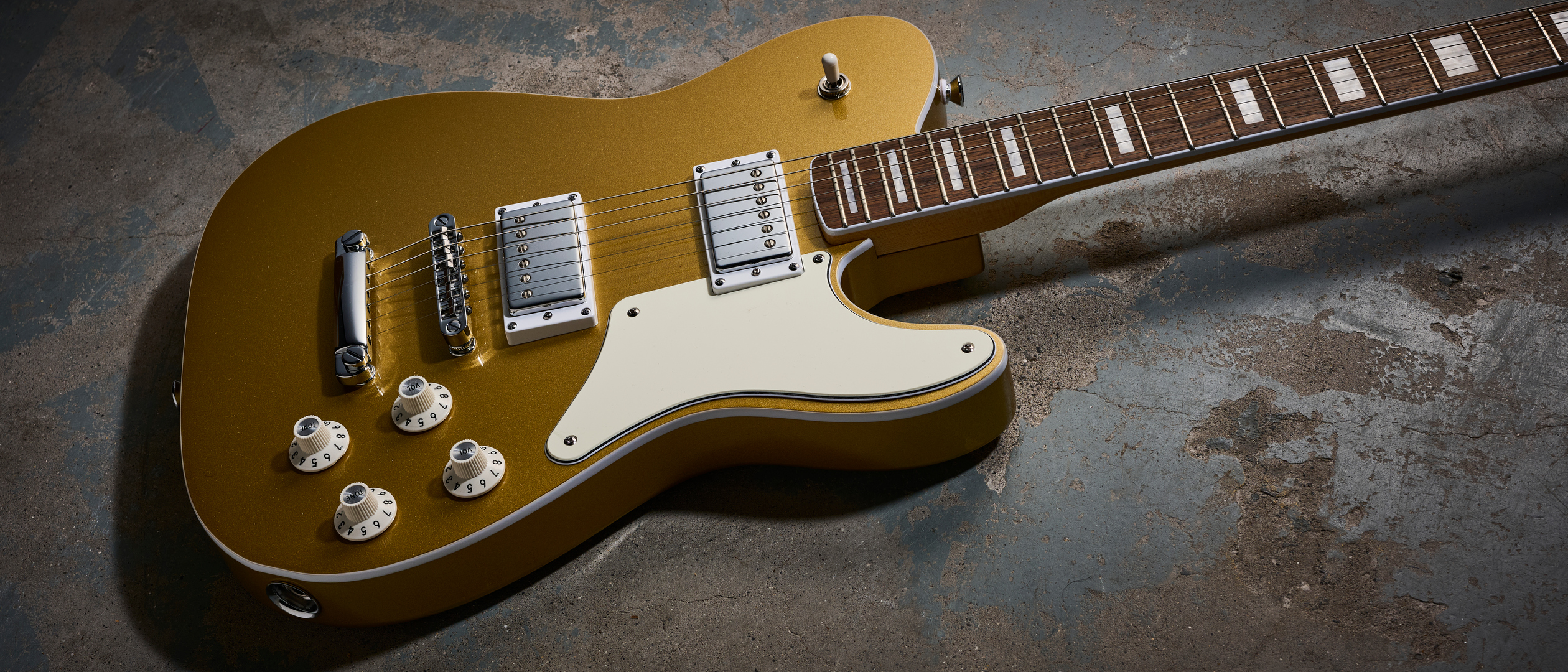MusicRadar Verdict
The Squier Troublemaker fuses classic Fender Telecaster Deluxe design points and a few Gibson-style features with great aplomb. If you’re looking for a humbucker-loaded guitar (with coil splits) but want extra scale length and the ‘snap’ of a Fender, this will do it in style, regardless of the genre you play.
Pros
- +
Thick humbucker tones in a Fender format.
- +
Excellent playability.
- +
Punches well above its weight.
Cons
- -
Very minor finish flaw.
- -
A few more colours would be nice.
MusicRadar's got your back
What is it?
If you’ve kept an eye on new releases from the Fender and Gibson electric guitar stables recently, you might have noticed a bit of role-reversal going on. First is the reissue of Gibson’s Victory, which takes the form of an (albeit humbucker-loaded) doublecut. Meanwhile Squier has opted to take a different angle with its longest-running outline, with the distinctly ‘Nashville-esque’ Troublemaker Telecaster. Have we found ourselves stumbling into the Upsidedown?
Not quite, however, the Troublemaker does form part of Squier’s most recent run of Paranormal guitars, which takes its cue from Fender’s Parallel Universe: delivering reimagined versions of its designs, indulging our ‘What if?’ games of Fantasy Guitar Line-Up.
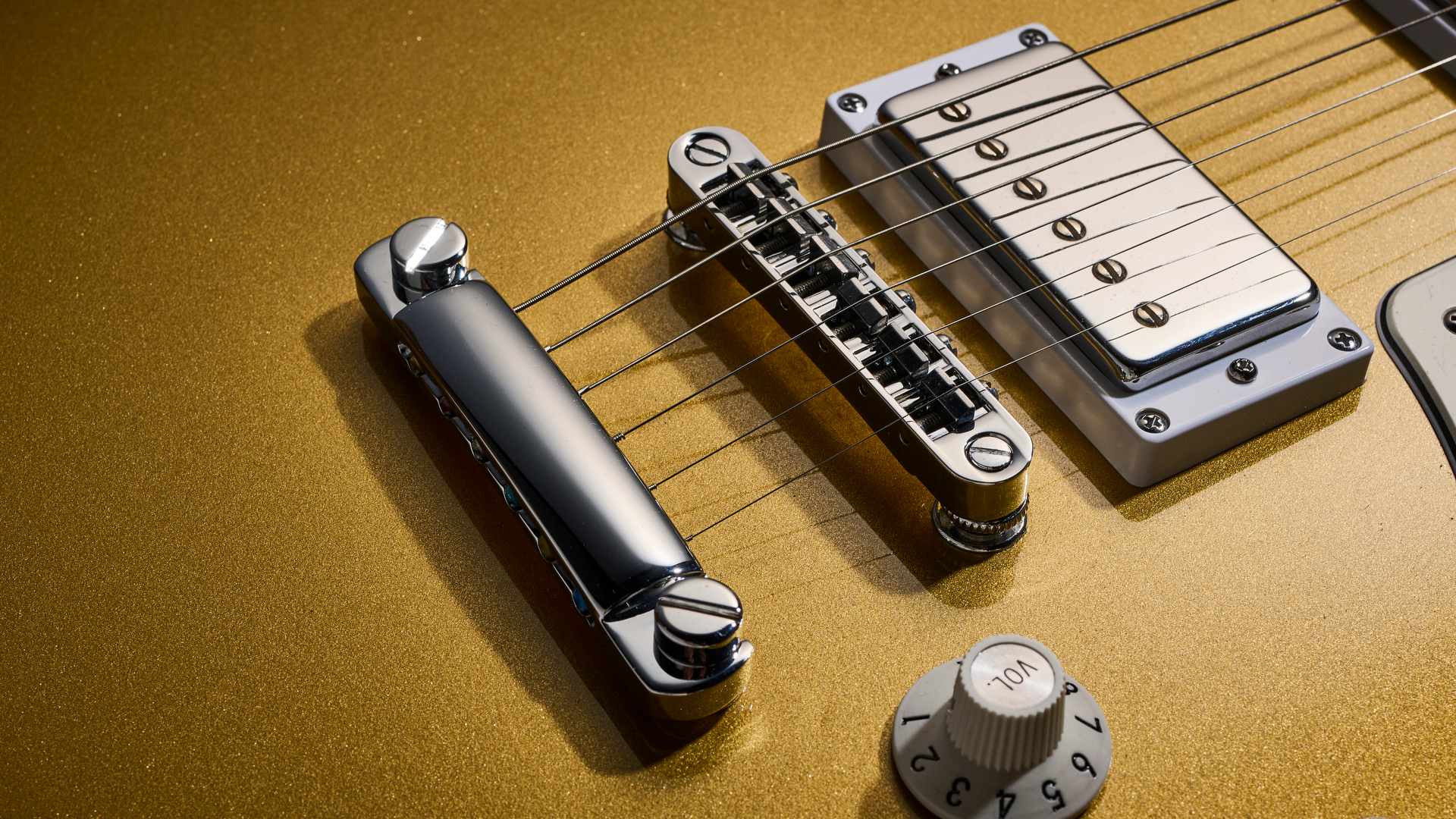
Now, Gibson doesn’t make a T-style guitar, and for the benefit of trademark infringement bounty hunters, I'm going to reiterate, only Fender and it’s associated brands do. But with all that said, if Leo and Les had sat down for a beer (and maybe they did), there’s every chance they might have turned out something resembling the Troublemaker.
I’m exaggerating a little there, of course. Because the Troublemaker is built on the Telecaster Deluxe format, which has always blurred the lines between the two biggest brands with its flat-topped poplar body, dual humbuckers (in this case, Fender-designed Alnico models with independent coil-splitting), four-control layout and three-position switching.
For the Squier Paranormal Troublemaker, through, it goes a couple of steps closer towards SG territory. There's a Tune-o-matic-style bridge and stoptail, rather than the string-through we’re used to on a Deluxe. This review model even has a sort-of Goldtop finish!
Specs
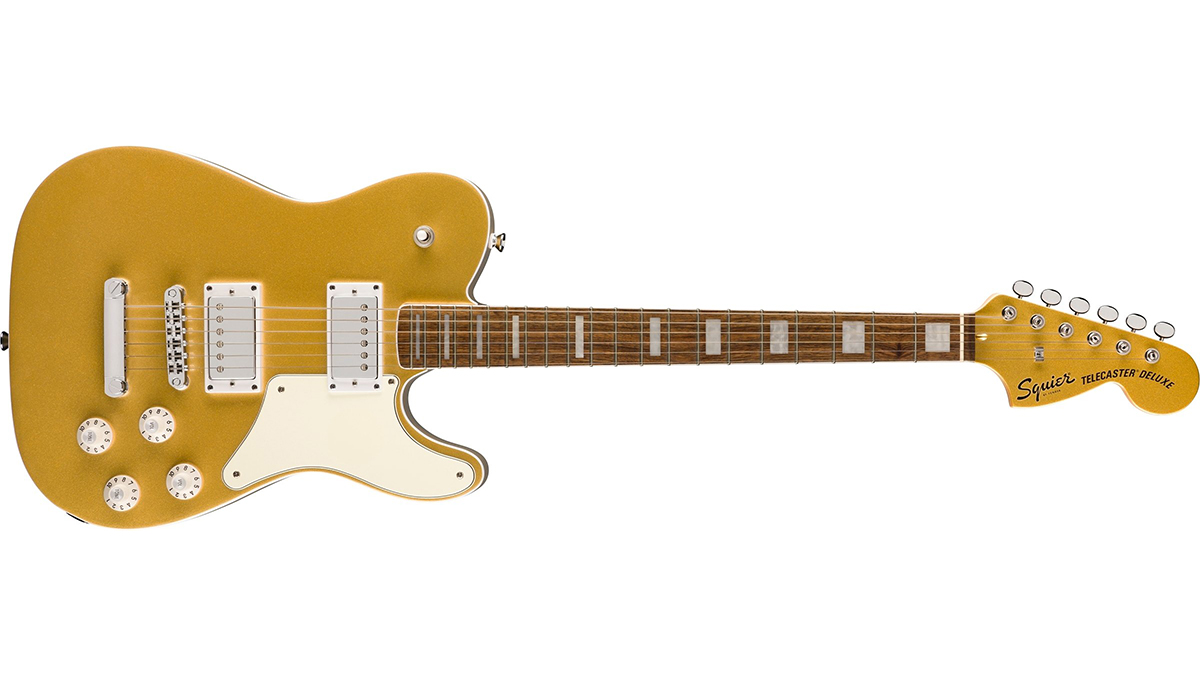
Launch price: $449/£439/€509
Made: Indonesia
Type: Six-string electric guitar
Body: Poplar
Neck: Maple
Fingerboard: Laurel
Scale length: 648mm (25.5 inches)
Nut/width: Plastic/42mm
Frets: 21
Hardware: Vintage-style chrome tuners, Tune-o-matic-style bridge
String spacing at bridge: 52mm
Electrics: Fender-designed alnico humbuckers, 2x volume, 2x tone (w/coil-splitting), 3-way selector
Weight: 7.8 lb/3.54kg
Left-handed options No
Finishes: Aztec Gold (as reviewed), Ice Blue Black w/gold hardware
Case: No
Contact: Squier
Build quality
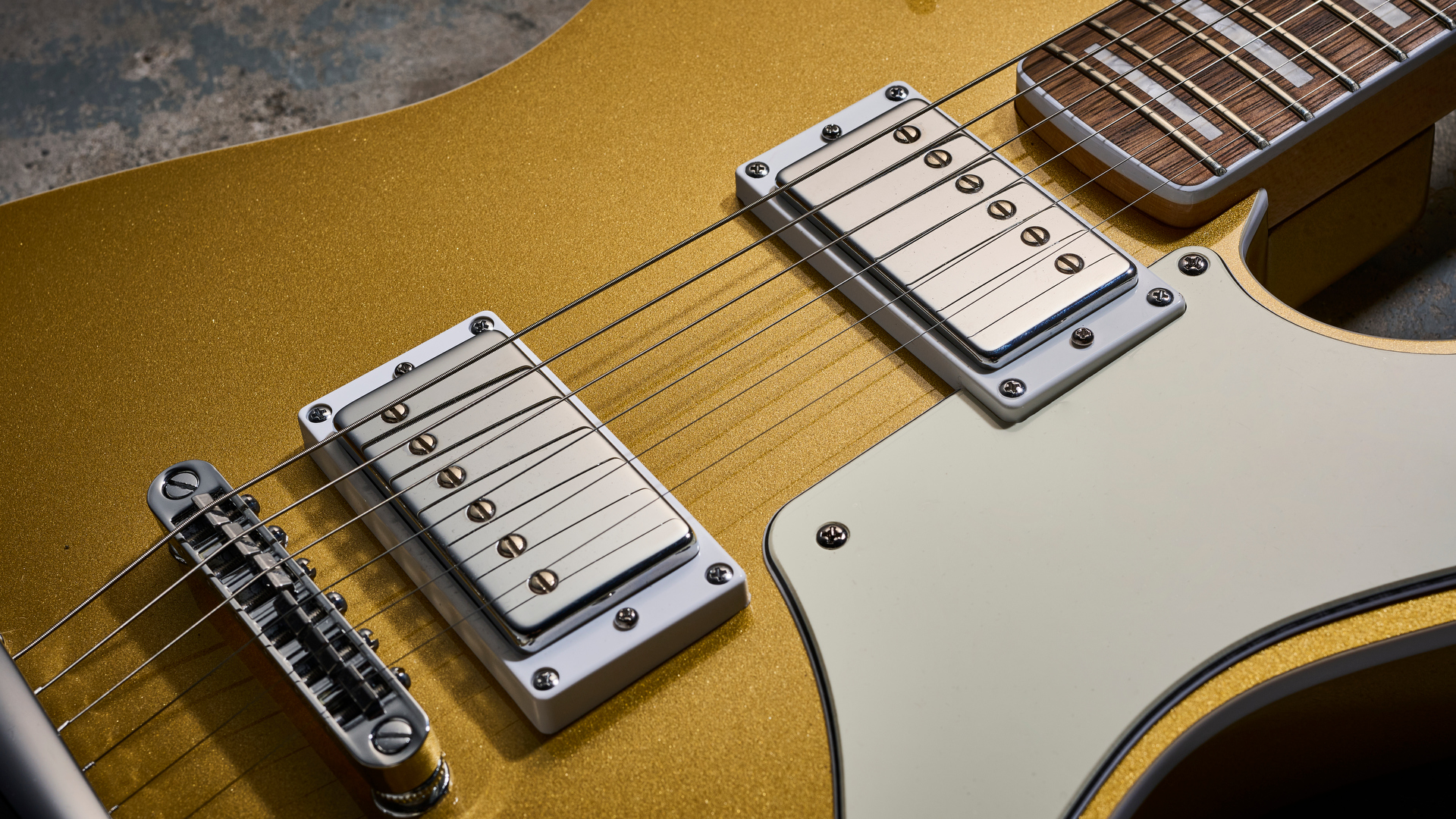
Build quality rating: ★★★★½
Fender sent me a Troublemaker in Aztec Gold –– it’s also available in Ice Blue and Black –– and it’s a striking display straight out of the box thanks to the colour-matched headstock.
The metallic finish has a more mustard-y hue to it than say, Shoreline Gold, and the review model is very neatly finished, spare a tiny hairline lacquer crack on the bass side of the neck pocket (something that is a frequent fixture from multiple brands). With the retro finish of the paint job, the fairly stark white plastics do present a reminder that this guitar is an affordable one, but this ain’t the Custom Shop, and if the savings need to be made, it’s better that it’s on replaceable parts.
Aside from this, though, everything is as it should be with smooth controls, securely-fastened hardware all round and neat, clean binding outlining the body and fingerboard.

Laurel is often seen as an affordable, less desirable alternative to rosewood, but now would be a good time to remember that Epiphone uses laurel almost exclusively, and frequently on guitars that cost well over double this one
Talking of which, the laurel fingerboard –– where not populated with block inlays –– looks good, if perhaps on the light side. But if you did want to darken it down, some fretboard treatment would probably offer you another shade or two.
Laurel is often seen as an affordable, less desirable alternative to rosewood, but now would be a good time to remember that Epiphone uses laurel almost exclusively, and frequently on guitars that cost well over double this one, so it shouldn’t be sniffed at either.
To the back, there are cavity covers for the selector switch and control cavity, both of which are sized for a fairly snug fit. Inside the control cavity it’s easy to see why, because Squier has gone with mini-pots for the volume controls, while the switched tone controls take up more vertical space. Worth knowing if you intend to change the electronics on the Troublemaker at any point.
Playability
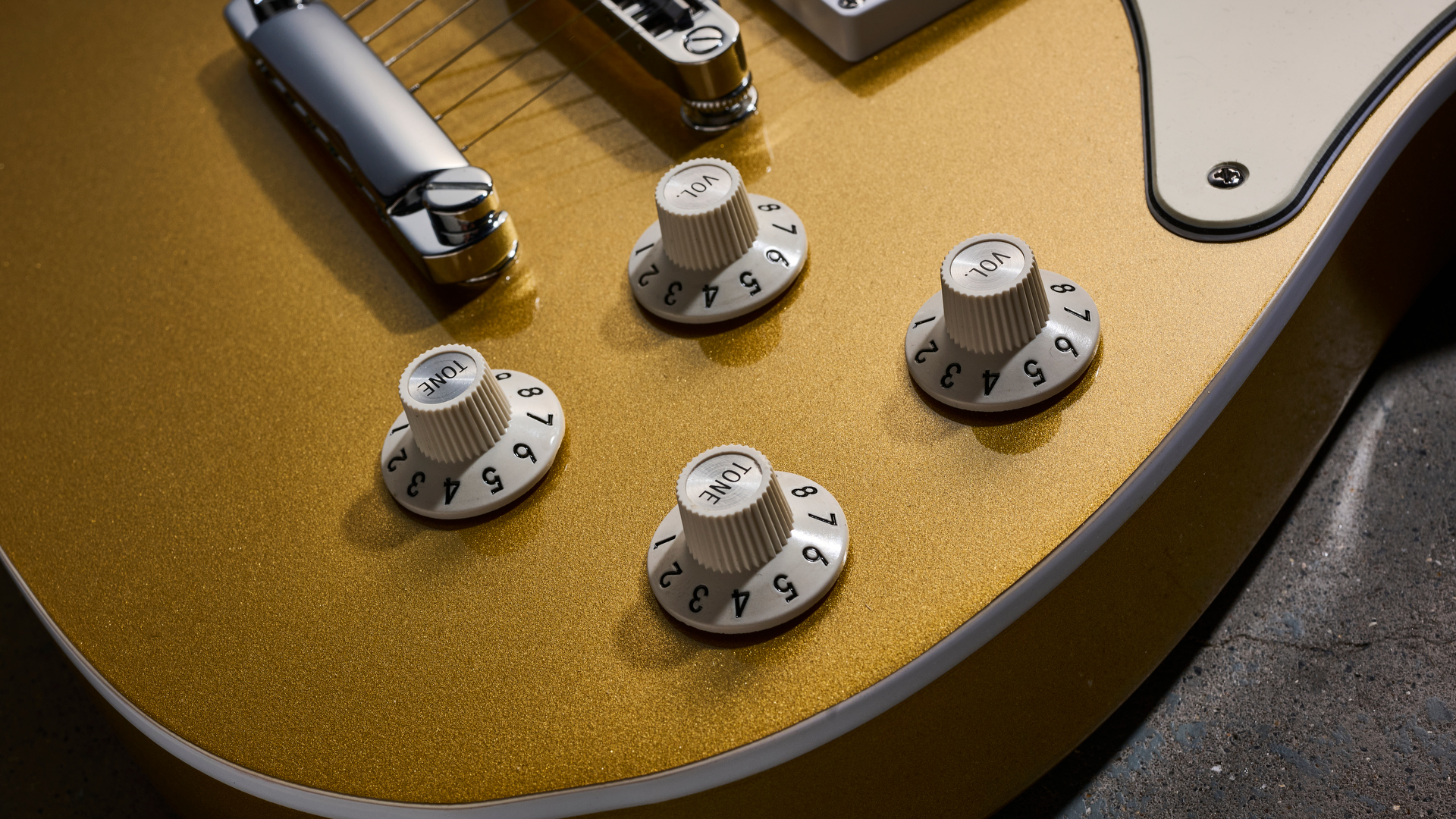
Playability rating: ★★★★★
The review model is very neatly finished, spare a tiny hairline lacquer crack on the bass side of the neck pocket
It's hard to remember what constitutes a ‘bad’ budget guitar. That is to say, that as guitarists we’re constantly spoiled by ever-increasing quality. The Troublemaker is hardly a ‘cheap’ guitar, with a retail price that's creeping towards the upper end of Squier's territory.
But, it is designed to be more affordable than say, a Fender Player II. However, it’s also regularly surprising just how good an ‘affordable’ guitar can be when it comes to playability.
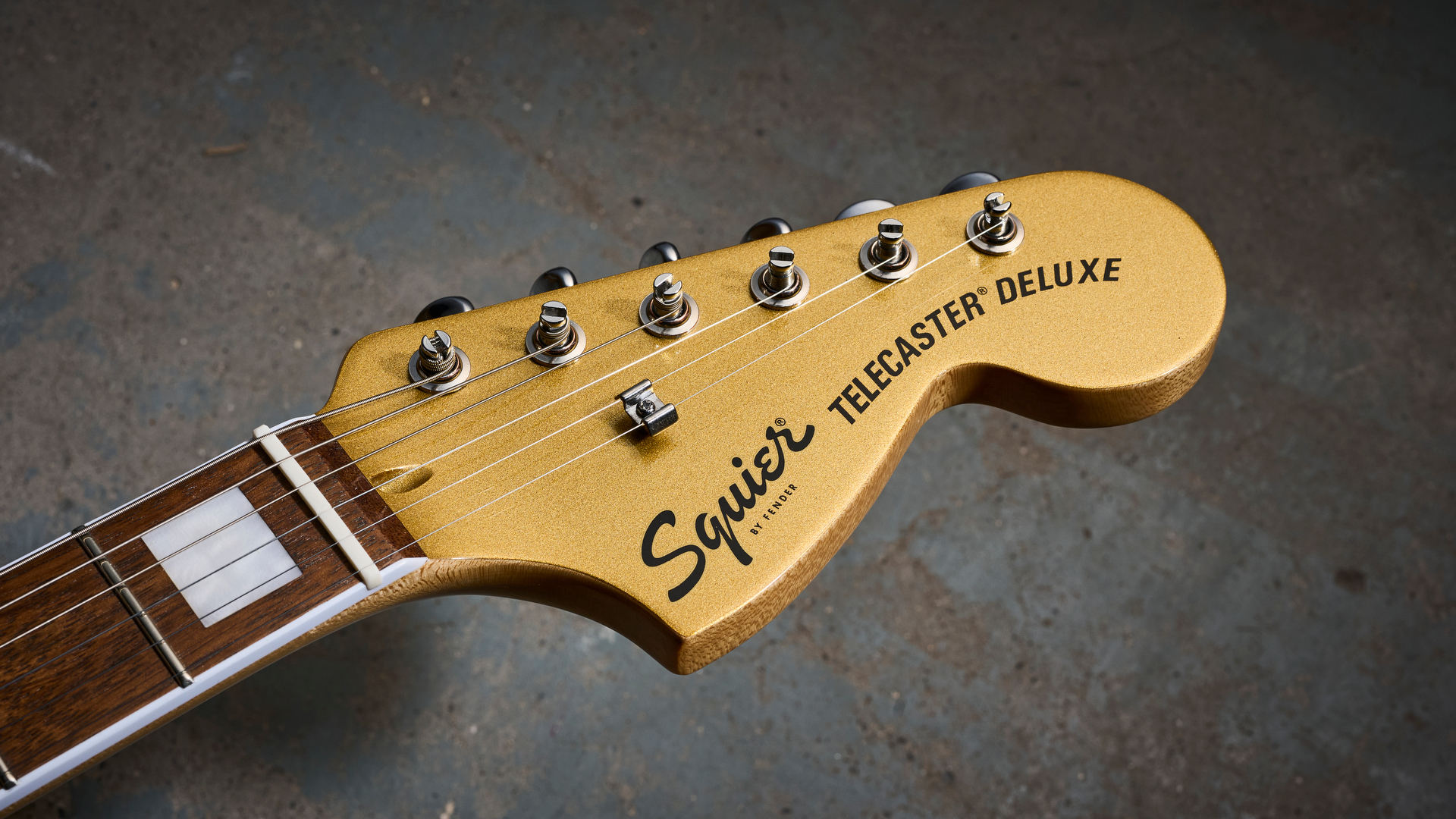
This Troublemaker comes set up with a low-whatever-the-price action which, combined with the Goldilocks C-shape neck profile, is incredibly comfortable to play. Chords fret easily, while string bends ring-out, free of choking when you reach for the ceiling, and the highly-polished frets allow for the strings to skate over them nicely.
The Troublemaker is intonation is set nicely too, meaning I can’t blame any wayward notes on the guitar. If this is your first guitar (and to be honest, even if it’s not), you’ll find nothing to complain about as it delivers an excellent platform to start playing on.
Similarly, the setup is good enough that you could take it to a rehearsal or gig straight out of the box if you’re eyeing the Troublemaker as an addition to your collection.
Sounds
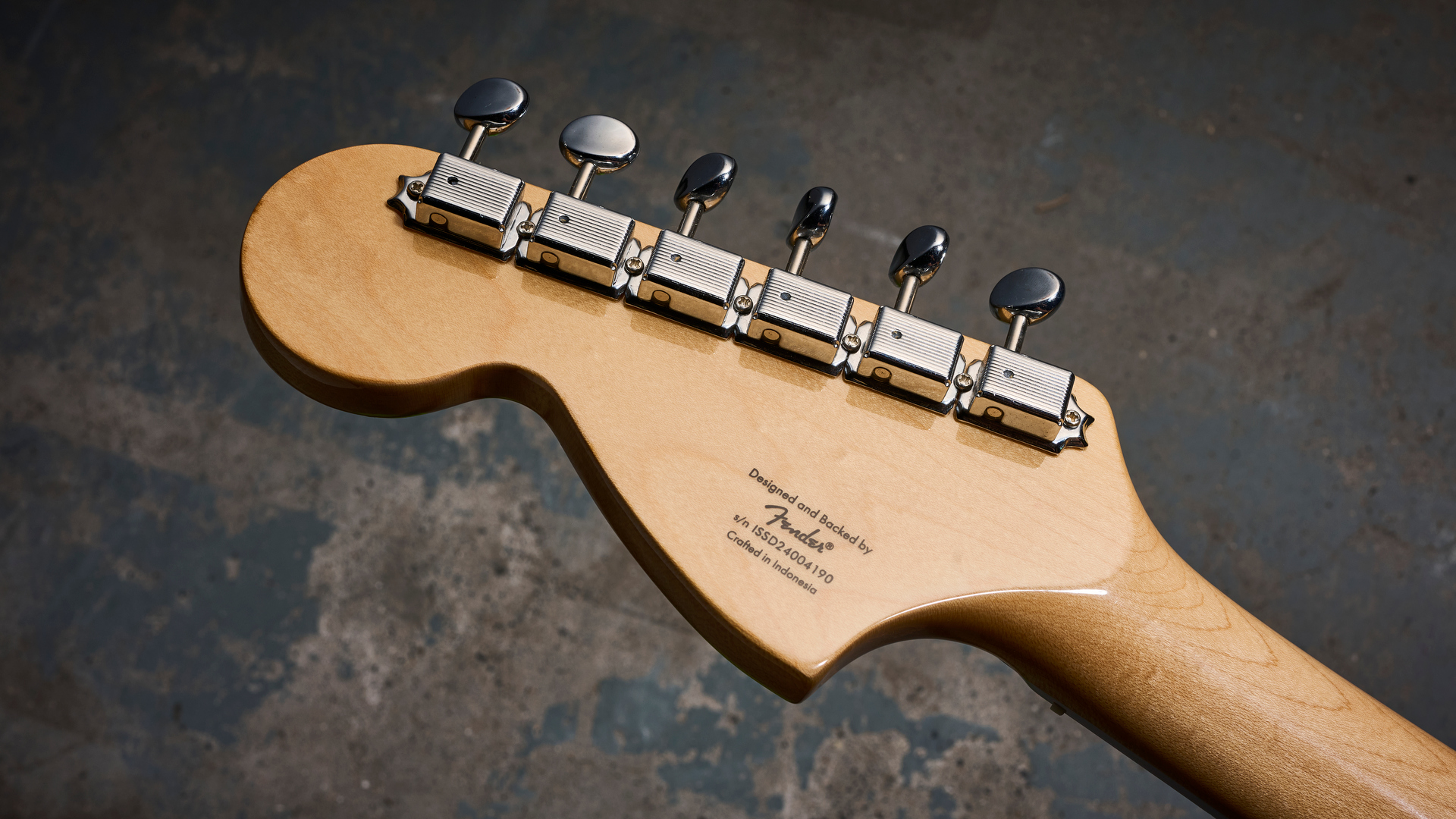
Sounds rating: ★★★★★
If you’ve ever tried putting humbuckers in a Strat and expected it to roar with the thump of a Les Paul, you’ll know that you’re heading for disappointment. That’s not to say that a humbucker-loaded Fender can't sound great –– I own an HSS Stratocaster that I love –– but it’s different, in the same way that applying coil splits to a Les Paul or SG does not a Fender make it.
In the neck position, where I might expect a bit of wooly flab, I’m met with deep, hollow bass accompanied by a raspy top-end
However, to serve as proof that our guitars’ tones are the sum of every part, the Troublemaker sounds absolutely fantastic. Perhaps it’s the pairing of a thicker Tele body and body-mounted humbuckers, it could be the longer scale length, or perhaps the T-o-M-style bridge - I’d wager it’s a little bit of all these things converging.
In the neck position, where I might expect a bit of wooly flab, I’m met with deep, hollow bass accompanied by a raspy top end. Everything is nice and clear, and it gets even better under gain, supplying some rock ‘n’ roll tones raunchy enough to make Keef blush.
Moving to the bridge pickup and I’m in Mid Town, extra quack and pluck while remaining thick and full under overdrive. It’s very much a hybrid combo of what you’d hope for from a humbucker in the back seat of a Fender.
The mid position is a lot of fun too, especially given the additional controls allowing for Gibson-style blending and switching. Beyond the most basic concept of independent volume and tone for each pickup, the ol’ killswitch stutter effect is at the tip of my fingers, as is the ability to knock the tone off the neck pickup and tuck in under the force of the bridge.
Coil splits tend to be viewed as a bonus - there to get us out of a dual-coil jam when needed but never really fulfilling the brief entirely. Here, though, I’m impressed. If any brand should know about great single coil sounds, it’s Fender/Squier, particularly with the neck pickup in its split state.
Tonally, the connotations of a Telecaster lean towards certain players and styles. But I’m also talking about the guitar that, since its inception, has cornered the market as one of the most versatile six-string electrics out there. In this guise, it does it again - indie, country, classic rock, punk, blues, it’s got them all covered, and I wouldn’t rule it out as a capable guitar for heavier styles either.
The added scale length unlocks some additional lower tuning abilities, and the pickups have enough attack and power to react well under heavy gain. Let’s face it, the Tele is no stranger to metal, and in this configuration it’s (tonally at least) packing some punch.
Verdict
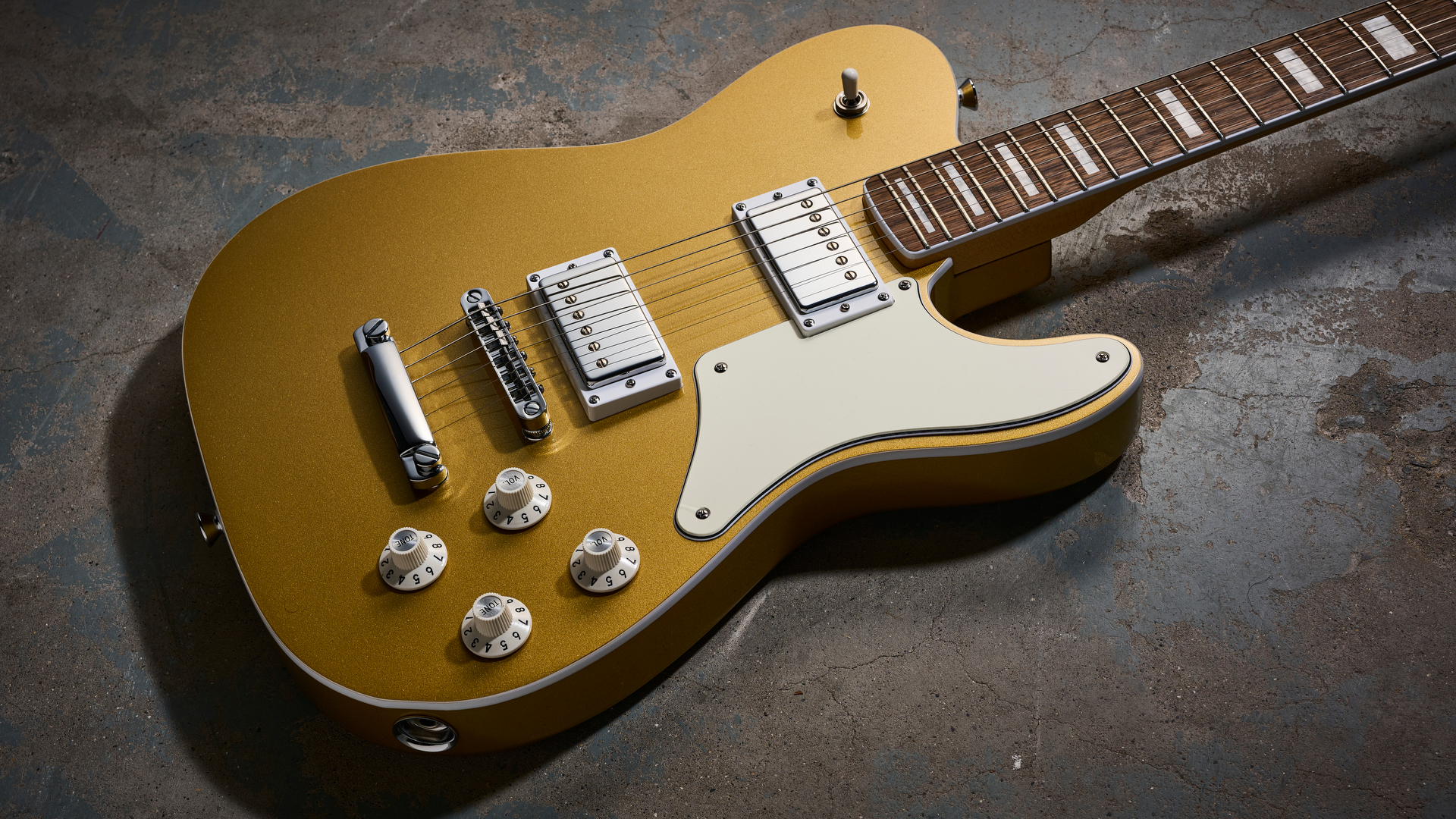
I recently had the pleasure of interviewing Foo Fighters guitarist, Chris Shiflett –– now on his third Telecaster Deluxe signature model –– who revealed that until he first designed a signature guitar with Fender, he didn’t really think about the specs too much. At a glance, the Troublemaker is a Telecaster with a couple of humbuckers. In detail, it’s so much more and testament to the fact that thinking about the small stuff pays off..
As you can tell, I was impressed by pretty much every aspect of this guitar, and as someone who is always looking to find as much value in an instrument as possible, there’s a lot to be excited about. It does a lot of things very well, plays very comfortably, sounds excellent and, as is important to us all, it looks great.
At times, it was easy to forget that I was playing a Squier, and while there’s a lot of competition in the upper-entry/mid-priced market, the Troublemaker goes way beyond holding its own. It’s the most impressive Squier guitar I’ve played this year, and probably my favourite in a few.
MusicRadar verdict: The Squier Troublemaker fuses classic Fender Telecaster Deluxe design points and a few Gibson-style features with great aplomb. If you’re looking for a humbucker-loaded guitar (with coil splits) but want extra scale length and the ‘snap’ of a Fender, this will do it in style, regardless of the genre you play.
| Test | Results | Score |
|---|---|---|
| Build quality | Well-finished, with a small cosmetic issue on our model | ★★★★½ |
| Playability | Excellent out of the box. | ★★★★★ |
| Sounds | A versatile meeting of Fender and Gibson worlds. | ★★★★★ |
| Overall | A guitar that punches well above its price point. | ★★★★★ |
Also try
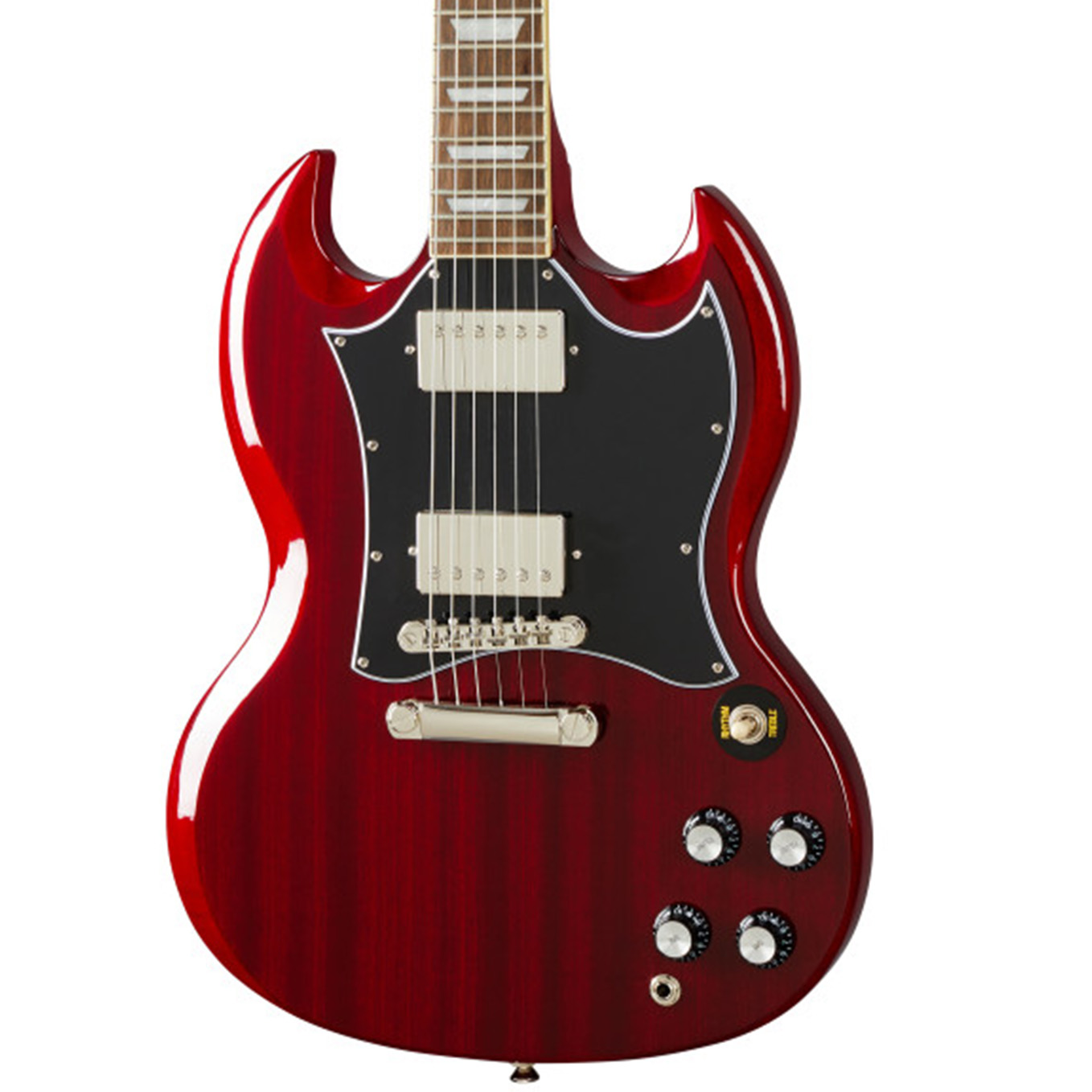
$499/£489/€559
The SG is well known for its ability to deliver Les Paul-style tones but without the potential backache. Epiphone's version of the SG Standard comes in at a very reasonable price, and is fitted with a pair of Epiphone Alnico Classic PRO humbuckers, CTS pots and comes with a hard shell case. Get it in Alpine White, Ebony or Heritage Cherry.
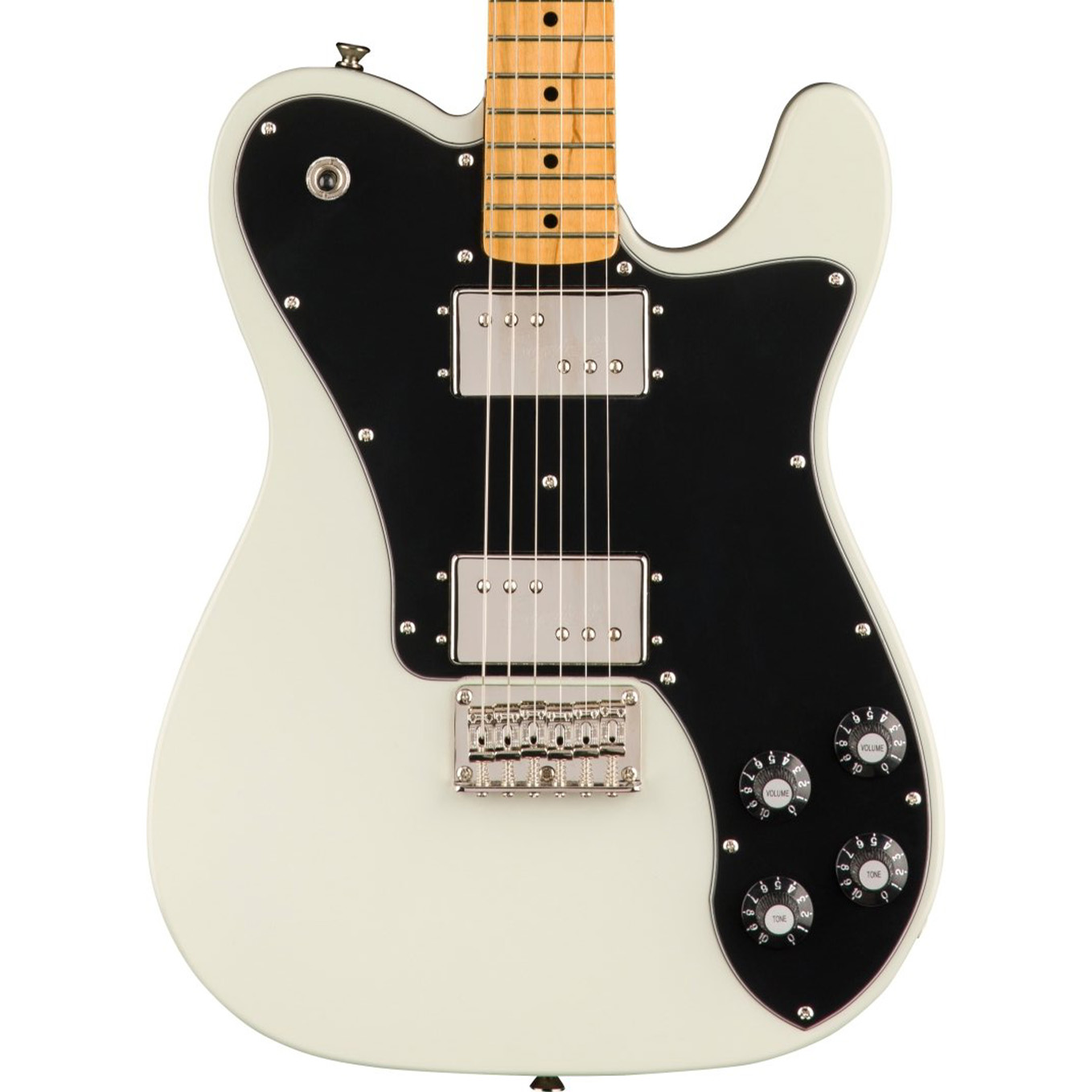
$379/£356/€429
Squier also makes a more traditional, '70s-inspired Telecaster Deluxe as part of its excellent Classic Vibe range. You lose the coil-splitting, but gain vintage-style appointments such as the full-face pickguard. One to try for sure.
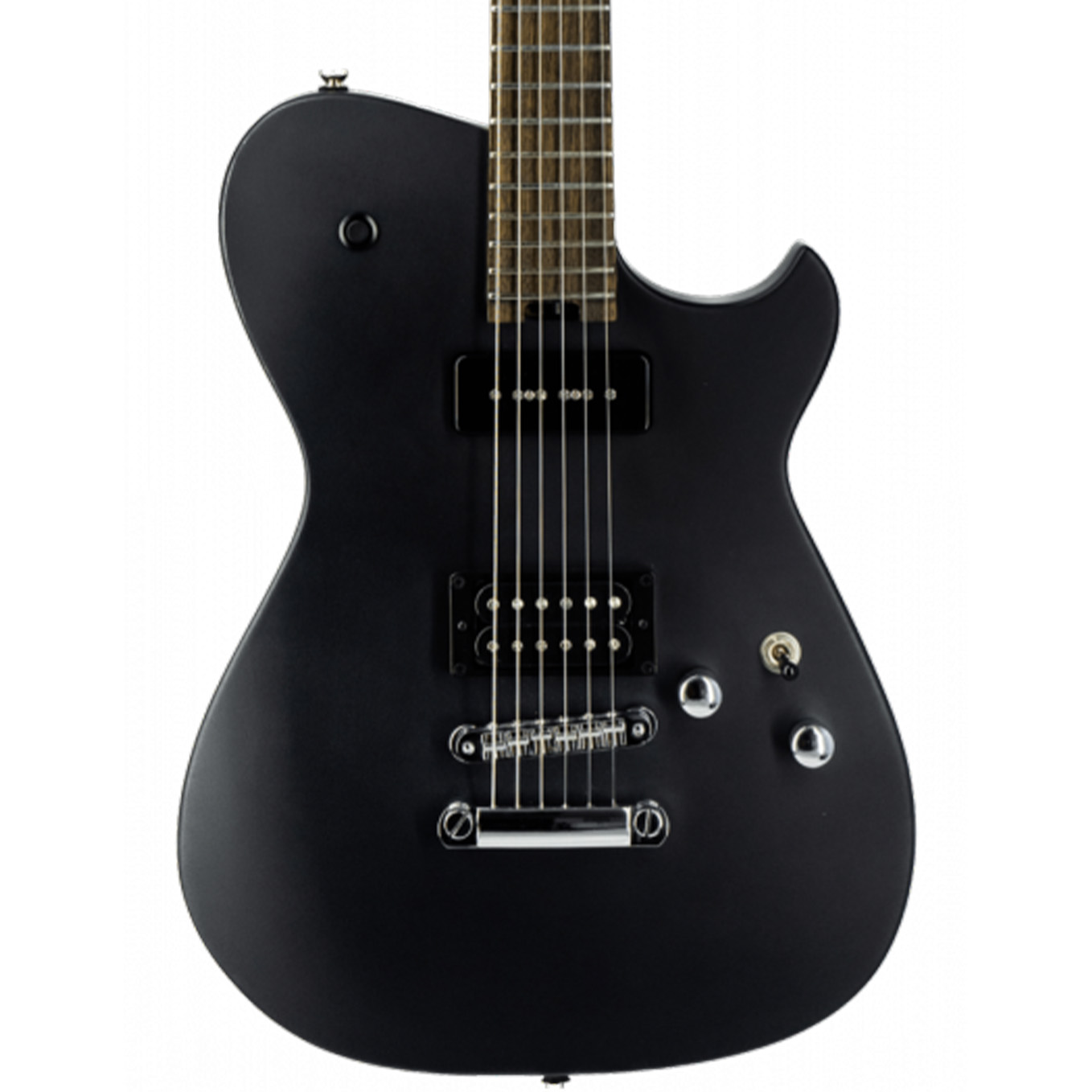
$599/£549
This collaboration between UK guitar institution, Manson and Cort brings us Muse man Matt Bellamy's essence on a budget. But it's full of charachter, from the V-shape neck profile to the humbucker/P90 pairing and kill switch. If you're after a solid rock guitar for not much money, put it on your list.
Hands-on videos
Andertons Music Co.
Alamo Music Center

Cars and Guitars

I'm a freelance member of the MusicRadar team, specialising in drum news, interviews and reviews. I formerly edited Rhythm and Total Guitar here in the UK and have been playing drums for more than 25 years (my arms are very tired). When I'm not working on the site, I can be found on my electronic kit at home, or gigging and depping in function bands and the odd original project.
“I used everything I knew about music”: How Green Day exceeded expectations with their most ambitious song
YouTube just added AI tools that makes musicians, library music and video editors redundant
“Every one of them said yes without hesitation": Hank Marvin and Roger Taylor have just remade a '60s classic for charity
